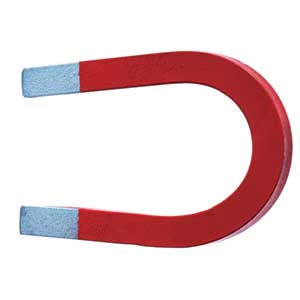 |
| I artz a magnet and not a horseshoe..... I hope..... |
- A magnetic field is the distribution of a magnetic force in the area surrounding the magnet. There are two different magnetic characteristics of the electric fields, north and south.
 |
| Magnetic field + Flashy lights |
 |
| Interaction between magnets... |
- Similar magnetic poles such as north and north, south and south, repel one another, which means that they push each other away. Dissimilar poles such as north and south, or south and north attract one another, which means that they pull each other together. However, these features have more or less force depending on the distance, so two close magnets either repel or attract each other with great strength, but weakly repel or attract each other.
 |
| Earth's magnetic field + colours |
- Magnetic forces are not limited to only 2 magnets, but magnets can also attract certain metals that are not magnets. Magnets can attract certain metals such as iron, nickel, cobalt or mixtures of these metals. The special name for these metals are called ferromagnetic metals, magnets themselves are ferromagnetic metals.
 |
| Oersted's Principle, those circles are compasses.... |
-The domain theory of magnets is that all large magnets are made up of smaller and rotatable magnets, called dipoles, which can attract/repel other dipoles close to it. A magnetic domain is produced when the dipoles line up.
-Oersted’s Principle states that a circular magnetic field is produced around the conductor when charge is moving through it.
 |
| Right Hand Rule #1, It's always right... hahaha.... |
- The Right-hand rule #1 states that when you grasp a conductor with the thumb of your right hand pointing in the direction of the positive current flow, our curved fingers point in the direction of the magnetic field.
- The Right-hand rule #2 (For conventional current flow) states that when you grasp a coiled conductor with your hand and your curved fingers in the direction of the positive current flow, your thumb will point in the direction of the magnetic field inside the coil.
 |
| Right Hand Rule #2.... This is the right way... hahaha... |
- Current in a coil can be measured with the formula B2 = B1 (I2/I1) where B2 and B1 is the strength of the magnetic field and I1 and I2 are the currents before, and the increased currents respectively through the conductor.
- The number of turns in a coil can be determined with the formula B2 = B1 (n2/n1) where B2 and B1 is the strength of the magnetic field and n1 and n2 are the number of turns in the coil.
- Demagnetization may occur among ferromagnetic materials. Demagnetization is the loss of magnetic strength within ferromagnetic materials. The strength of a magnet can only become so strong and that limit is the maximum strength.
No comments:
Post a Comment